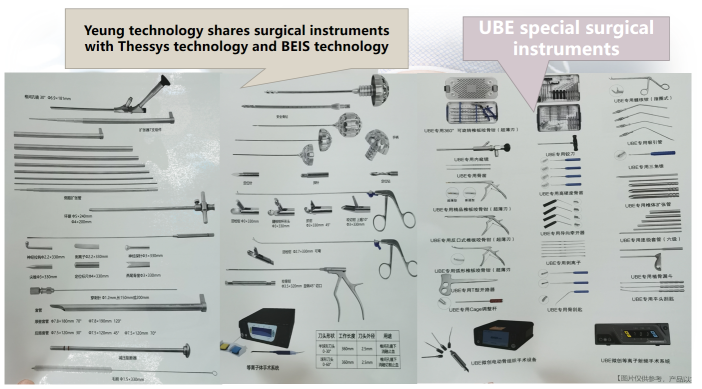- Shanghai, China
- [email protected]
- +86-21-58189111
Adapt to the crowd
There is no essential difference between the selection criteria for microscopic discectomy under transforaminal or endoscopic discectomy and the selection criteria for laminectomy and discectomy. Patients with disc herniation who elect to undergo minimally invasive surgery must exhibit signs and symptoms of nerve root compression and must meet the following criteria:
1. Persistent or recurrent radicular pain;
2. Root pain is more serious than low back pain. If the symptoms of low back pain are greater than that of leg pain, patients with moderate or lower bulge can do low temperature plasma nucleoplasty first;
3. Ineffective after strict conservative treatment. Including the use of steroidal or non-steroidal anti-inflammatory pain relievers, physiotherapy, occupational or conditioning procedures, conservative treatment is recommended for at least 4-6 weeks, but if neurological symptoms worsen, immediate surgery is required;
4. No history of drug abuse and mental illness;
5. The straight leg raising test is positive, and it is difficult to bend over;
6. In order to accurately determine the position and nature of the protruding or prolapsed nucleus pulposus, as well as the condition of intervertebral foraminal bone hyperplasia, a thorough imaging examination should be carried out before surgery, especially CT and MRI to accurately determine the size and location of the nucleus pulposus. and important means of character.

Technical Features
Clinical advantages of PTED
After the introduction of PTED technology in Shanghai, Professor Lu Zhenhe from the Pain Department of Shanghai Muyang Hospital set up a clinical-research team for foraminal endoscopy. Non-discscope) combined with Tessys technology independently, successfully performed discectomy for many patients with lumbar disc herniation. All patients suffered from low back pain and unilateral lower extremity radiation pain, which were ineffective after treatment with drugs and bed rest, which seriously affected work and life. After adequate preparation, the lumbar lateral approach was performed under local anesthesia to complete the removal of the nucleus pulposus of the intervertebral disc under the microscope, which immediately relieved the pain of the patient. The symptoms were relieved as usual after the operation, and the patient could be discharged from the hospital within three days.
It is understood that this technology uses a special lateral foraminal approach to remove the herniated disc tissue under endoscope monitoring, which is less traumatic than the usual posterior approach. Access to the target site by a typical laminectomy entails extensive damage to structures important for spinal stabilization, which usually requires immediate spinal fusion. Conversely, the foraminoscopic technique gradually widens the foramen through a patented reamer and corresponding medical instruments, completely removing any herniated or prolapsed debris and degenerated inflammatory nucleus pulposus. The lesion site can be continuously lavaged and anti-inflammatory, and the annulus fibrosus can be repaired with radio frequency electrodes, ablation of nerve-sensitized tissue, blocking of annular nerve branches, and relief of pain in the patient's soft tissue.
PTED compared to other treatments
Compared with indirect decompression techniques such as mechanical resection and decompression of the nucleus pulposus, chemical nucleus pulposus dissolution or laser gasification, endoscopic discectomy is a direct technique for targeted excision of herniated disc fragments and decompression of nerve roots.
In recent years, the widely recognized posterior discoscopy technique (MED) can be applied to all kinds of lumbar disc herniation, but because the surgical approach and procedure are the same as those of small incision open surgery, they all need to be inserted through the paraspinal muscle. The approach and implementation of laminectomy, muscle ligament and bony structure resection, so its minimally invasive is limited. Compared with the foraminoscopic technique, it has obvious advantages such as less trauma, less bleeding, easier anesthesia, faster postoperative recovery and less economic burden.
Leave a Comments